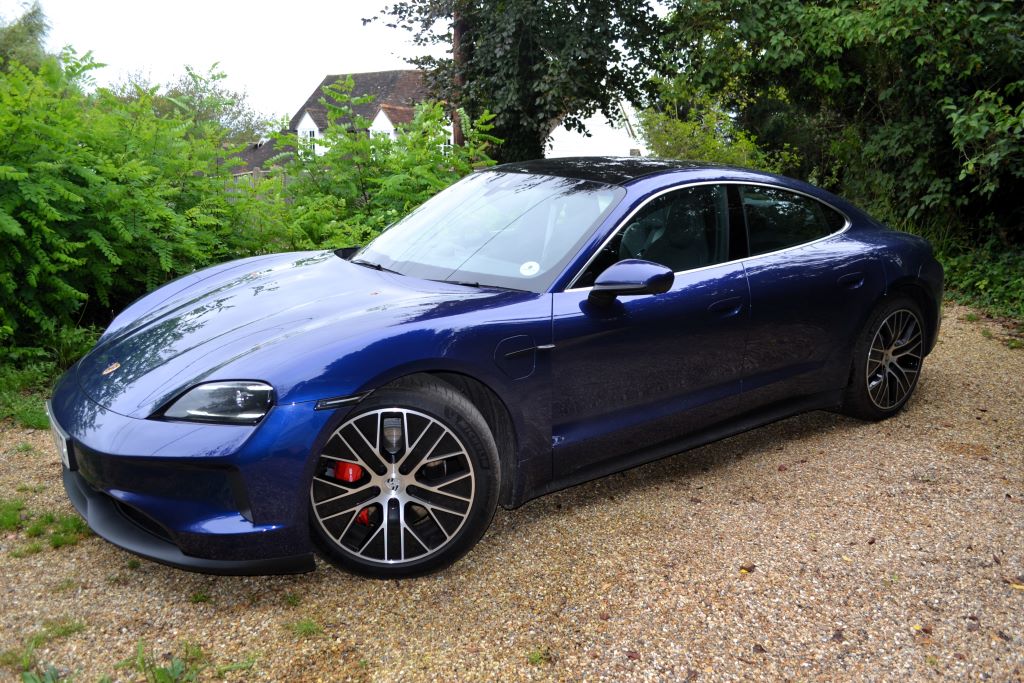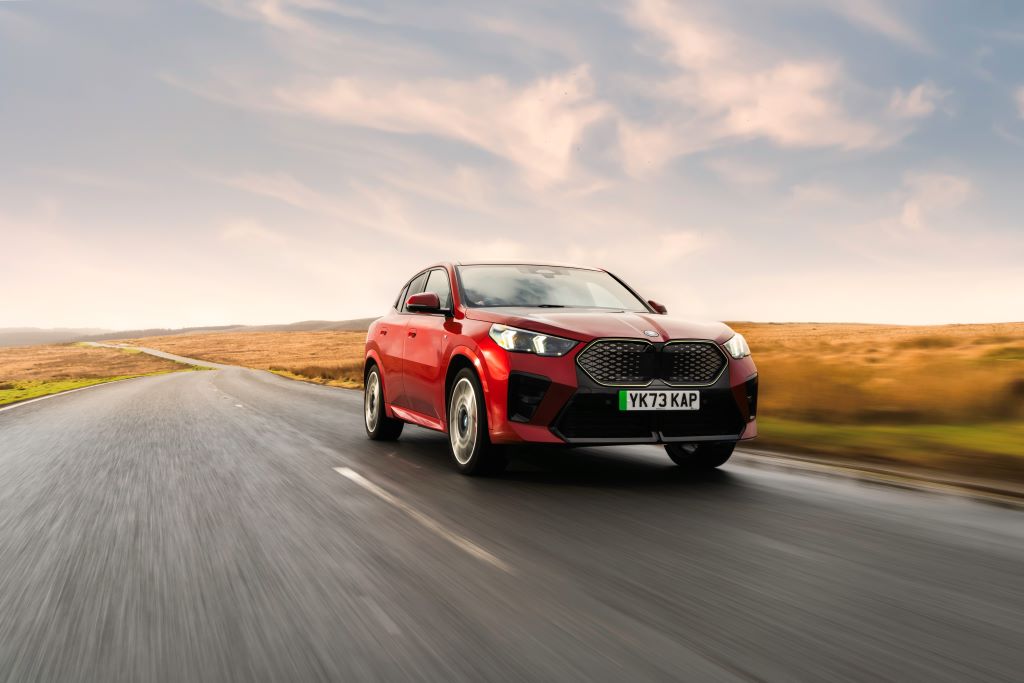Reviews 10 min read
BMW i3s: No longer the class leader it once was
With cheaper rivals offering similar performance, longer range, more space and practicality can the once forward-thinking BMW i3s hold its own on innovative and unique styling, advanced construction, prestige and engaging driving experience alone?
Discover EV expert verdict...
- Quirky styling hasn’t outdated
- Fun to drive (though firm ride may be too much for some)
- Uses eco-conscious materials
- Too expensive
- Cheaper rivals offer more range
- Compact, impractical interior and small boot
Overview
The BMW i3 was introduced in 2013 and in its first six years it shifted over 165,000 units worldwide making it the most widely sold electric vehicle in the premium compact segment. What’s more, the German car brand claims that early buyers of the car, who regularly travel long distances in their BMW i3, have each completed more than 200,000 kilometres. Despite the popularity of the car, and even though it will still be sold for the next few years, there will be no successor to the i3 city car with BMW instead focusing on electrifying its mainstream models. We reviewed both the BMW i3 and i3s a few years ago, but things have progressed somewhat in the EV sector since then, so as a last hurrah we live with the sporty i3s variant for a week to see how it compares to its latest rivals.
Driving
The i3 is obviously now an electric-only model, and while the powertrain was fairly revolutionary at the time, it has now been surpassed by newer competitors. So what are we looking at? Well, an AC synchronous electric motor is paired with a 42.2kWh battery (featuring active cooling and boosted from 33kWh and thus negating the need for the range extender version) and produces 184hp and 199lb-ft of torque in the i3s, paired with a single-speed transmission. This means it reaches 62mph from standstill in an impressive 6.9 seconds, while 50mph to 75mph take just 4.3 seconds setting – at the time – the benchmark for performance within its segment, and still is if you exclude the brand new Tesla 3 Standard Range Plus.
Also unlike a lot of electric vehicles which scrabble to put all of the torque down from zero rpm the clever engineers at BMW came up with a new traction control system (now fitted in BMW and MINI models) which basically responds 50 times faster for greater grip and driving stability in adverse weather and road conditions when pulling away, in active Brake Energy Regeneration phases and when accelerating out of tight corners. How does it work? Put simply, the control process is calculated directly in the powertrain instead of in a remote unit requiring long signal paths. It’s also rear-wheel drive unlike most of its rivals which helps it to remain more composed.
The BMW i3s is completely different to the i3 when it comes to handling, in that it’s infinitely better. That’s thanks to a few things – a 40mm wider rear track, 10mm lower ride height and uprated springs, dampers and anti-roll bars – all helping to provide more grip, balance and stability through the twisty stuff. In fact, we think it’s a whole heap of fun, but some criticise the ride for being too hard, which it is to be fair, to prevent what is actually a fairly tall narrow car from pitching and rolling too much. Personally, having edited BMW and Porsche magazines in a former life, I am used to stiff suspension but it’s not for everyone, with the standard 20” wheels shod in run flats not helping matters. Rivals such as the Nissan LEAF, Kia e-Niro and superminis from the Groupe PSA are a lot more comfortable, and the MINI Electric and Honda e a lot more engaging and rewarding. On the plus side, as it’s a BMW it feels responsive and agile, the steering is nicely weighted and with a small turning circle it’s great for darting through traffic and getting into tight parking spots. In fact, with its nippy acceleration and raised seating position it’s perfect for navigating city streets. The regenerative braking can be configured, too, so you can drive with just the one pedal.
There’s a choice of Comfort, EcoPro and EcoPro+ drive modes, with the latter two designed to save energy, and in the case of EcoPro+ switches off the climate control and limits speed to 56mph.
Range and running costs
Since the BMW i3 was launched in 2013, lithium-ion battery storage doubled (60Ah to 120Ah) while managing to maintain its original dimensions, meaning its electric range stands at 175 for the i3s. The other big news, of course is that the range extender versions (which use a two-cylinder 650cc petrol engine to provide additional charge to the drive battery) were deleted from the line-up by the end of 2018.
While we were getting close to the advertised electric energy consumption of 3.8 miles/kWh and around 160 miles when fully charged, bar the Honda e and MINI Electric all of its rivals offer above (and in some cases quite beyond) 200 miles. Also unlike a lot of rivals which can charge at up to speeds of 100kW, the i3S can only manage 50kW but as it’s a small battery it only takes 42 minutes for it to reach 80 per cent of its total power. At an 7.4kW BMW i Wallbox you can increase that time to 4.9 hours or 15 hours via a 2.3kW household socket. Unfortunately, there’s no hiding the fact it now falls well short of other EVs when it comes to charging times and range.
It may be cheap to run compared to petrol premium compacts, but we struggle to get past that hefty price tag, with the i3s starting from £39,220 (including the government grant). The i3 isn’t much cheaper at £36,690. With options (Melbourne Red with highlight Frozen Grey metallic, Suite interior world, Plus package consisting of 20" BMW i Double-spoke style 431 Jet Black alloy wheels, sun protection glass, Harman Kardon Hi-Fi and online entertainment, reversing assist camera, eDrive exterior sound, traffic jam assist and enhanced Bluetooth with wireless charging) our test car topped out a hefty £42,925. Even without the thrills, and thankfully the i3 has a generous amount of standard equipment, it’s more expensive than all its competitors and when you can buy a Standard Range Plus Tesla Model 3, for £40,490 – which basically ups the bar in every single department (performance and handling, passenger and boot space, range and technology) bar build quality and design (although the i3’s styling does polarise opinion) you’d be crazy to buy this electric BMW over anything else.
Design
The 2018 refresh brought a new exterior colour (Jucaro metallic with accentuations in Frozen Grey) increasing the choice of hues to five, as well as black A-pillars and roof lines to match the BMW i ‘Black Belt’ that runs from the bonnet over the roof to the car’s rear end. Inside, a new colour for the optional interior world Loft was introduced while other extras included telephony with wireless charging and a wireless LAN hotspot providing a fast online connection for up to ten devices.
We’ll say one thing for the i3, it still makes statement whether you like the styling or not and the fact it has a carbon fibre-reinforced-plastic passenger cell is impressive even eight years later. There’s not many cars launched back in 2013 that look as fresh in 2021 as the BMW i3. It’s also fun without being too gimmicky, and because it’s enticingly unconventional and great for driving around town it means the i3 continues to bring in a decent amount of sales. Last year the model accounted for 8 per cent of the compact electric vehicle segment in Europe.
Inside, the use of recycled materials is still something some manufacturers are only starting to look at employing now and as one would expect from BMW it’s well finished with a level of quality that puts many other car brands to shame. There’s a simple digital screen behind the steering wheel, the switchgear is logically laid out and simple to use, and the 10.25 inch screen in the middle of the dashboard, controlled by the familiar rotary controller, and provides infotainment and sat-nav, remains class-leading, although we have to say feels outdated when compared to BMW’s latest iteration of iDrive.
Comfort and practicality
It’s extremely comfortable (for those up front anyway) light and airy, thanks to the low dashboard which also means a huge glass area so you get a great view to the front and sides. Sadly, the thick central pillar means there’s a blind spot over your shoulder. It’s very spacious too, thanks to the lack of a proper centre console (the gear selector is located on the steering column) and there’s plenty of front head room (thanks to a tall roofline). It feels more like a lounge rather than a car, which is what a lot of EVs are desperately trying to recreate today.
The glovebox and door pockets are of a decent size, there’s an elasticated net under the centre of the fascia, a storage area in the armrest and a couple of cup holders between the front seats – although the second one is so far back it is awkward to use. Another bugbear, the boot is smaller than a Renault ZOE coming in at 260 litres so there’s only just enough room for a weekly supermarket shop or a pair of weekend bags, you’d certainly struggle to fit a pushchair in. Oh and there’s nowhere to store the bulky charging cables either.
The rear-hinged rear doors are to aid access but it makes it very awkward to get a child seat in. Annoyingly they can’t be opened without the front ones being opened first and as there’s no B-pillar for the front seatbelt to attach to, connecting to the door itself, so you can forget the idea of picking up the kids at school being a quick stop. What’s more, there are only two seats and adults won't want to spend a long time in the back with little knee and head room.
Verdict
At the time of launch the BMW i3 proved to the general public that electric cars could be funky and fast, and in that respect they played a major role in bringing them to the forefront of people's attention. Think how many you see on the road now, they’re a fairly common sight! The problem it has now though is that, bar larger, more energy efficient batteries to make it all electric it’s barely changed in the last eight years but that’s not true of the industry, which is moving fairly rapidly. In the last few years alone there’s been a new Nissan LEAF and Renault ZOE, Peugeot e-208 (and it’s Vauxhall Corsa-e cousin), Kia e-Niro, Mini Electric, Honda e and Volkswagen ID.3 – and they’re all cheaper! And as mentioned when you could bag yourself a brand new Model 3 Standard Range Plus (and with it, access to Tesla’s Supercharger network) for an extra £1270, the BMW i3s suddenly loses its appeal. Having once being considered a trailblazing small EV it’s no longer the best in class but, together with the plug-in hybrid i8 supercar (which we also had as a long-termer), it does make us excited about the future of what’s to come from the Bavarian brand – namely the i4, which we hope will also be a pioneer of its time and age just as well.
Key Specs
2020 BMW i3s
Price (RRP OTR): From £39,220, model as tested £43,660 (including plug-in grant)
Top speed: 99mph
0-62mph: 6.9 seconds
Power: 184hp
Torque: 199lb-ft
Driving range combined: 173-175 miles
Charging time: 42 minutes (50kW fast charger, 0-80%); 9.7 hours (3.7kW, 0-80%)
Insurance group: 29
Vehicle warranty: 3 years/unlimited mileage
Battery warranty: 8 years/100,000 miles

























Comments (0)
Be the first to write a comment
Login/ Signup